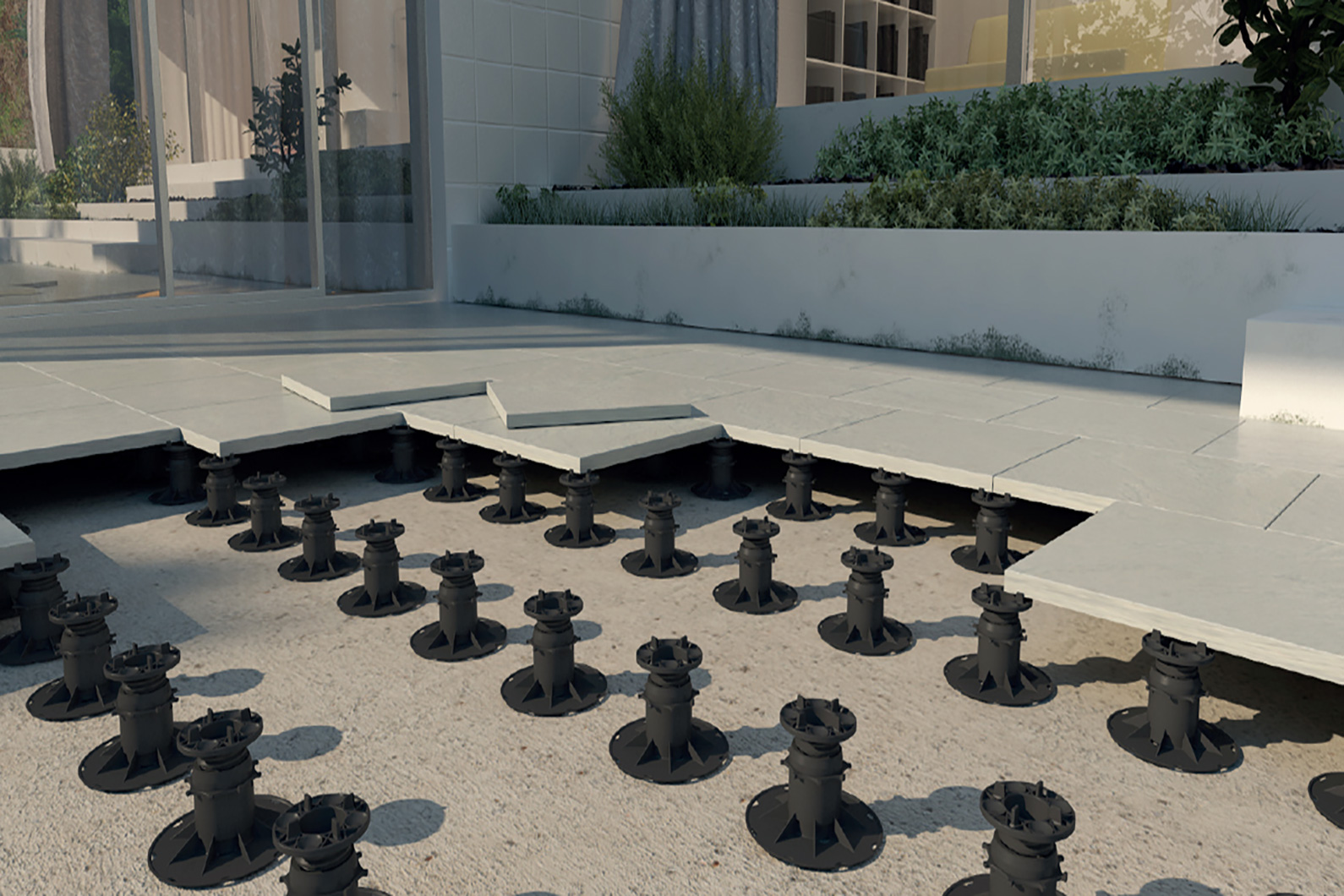Decking Joists: What Are They and What Do They Do?
Thinking about installing a deck for a commercial or residential building? You’ve come to the right place. An important part of deck installation is laying the deck joists, and there are several things to consider before you install them to ensure the integrity of your structure. For example, you need to think about the type of joist and decking system you’re going to use. Aluminium or timber joists? A timber or paved decking system? Here, we’ll discuss what decking joists are and what they do, as well as the benefits of using aluminium joists and the flooring options they’re compatible with.
What are decking joists?
Decking joists are repeated boards used as the structural base for the deck frame and you can attach them to the ledger with galvanised joist hangers. The hangers will make it easy to attach the joist boards and keep them secure and stable once you install the decking. Joists tend to run perpendicular to the building, whereas the decking on top runs parallel to the building. Every important part of your deck must be supported by a joist to prevent it from bending or buckling and to keep it structurally sound.
Why you should use aluminium joists
Decking joists can be made of either aluminium or wood. Which one should you use? An aluminium joist is the better option because unlike wood it’s cut with exact measurements and won’t get damaged by water, offering a precise, long-life, and warp-free solution to fitting decks. Even in extreme weather or temperatures, aluminium joists won’t distort or rot away. This also makes aluminium joists ideal for supporting paver systems that have small gaps between each slab or tile, as the water can go through and not damage the joists.
What’s more, you don’t have to treat and clean aluminium joists as regularly as wooden joists. For example, wooden joists require joist tape or wood treatment to protect cut joist ends from moisture damage and to minimise sound transmission. To help wooden joists last longer and reduce water damage as much as possible, you also have to install a drainage system under the deck, as well as clean and inspect the deck on a regular basis.
KEKSIA’s aluminium joist system, for instance, have a special pedestal head with two pre-formed clips that houses and secures the joist, anti-noise rubber, and adjustable decking feet (aka pedestals). The system also has clip-in joint spacers or sliding and rotating clips for fastening – you can request to have the clips customised to suit your decking type. You can fix the joists to the deck via hidden clips or fix them through the top with stainless steel self-drilling screws. All these parts combined make it safe, fast, and easy to lay the boards and decking and enable a stable surface to walk on. They also allow the use of large format pavers or complex paving patterns so it’s easy to remove and replace the relevant pavers when necessary.
Compatible with most decking types
Aluminium joists are compatible with various surface materials, such as natural or composite timber, porcelain slabs, and composite or stone pavers. They’re typically used with timber and paved decking systems in conjunction with adjustable pedestals.
Get aluminium joists now
As you can see, decking joists can help maintain the structural integrity of your deck and aluminium joists are more beneficial than wooden ones. There’s no need to treat and clean them regularly, they prevent water damage, and you’ll get a stable walking surface that’ll last for many years. Aluminium joists also have precise measurements and are compatible with different types of decking systems, so installing your deck will be a breeze.
At KEKSIA, we source unique products from forward-thinking companies that facilitate the transition to higher standards. Our adaptable and adjustable aluminium joist system makes any decking installation a smooth and reliable process. Check it out here. Alternatively, call us on 1300 633 099 or send us a message to learn more about how our aluminium joists can help you.


